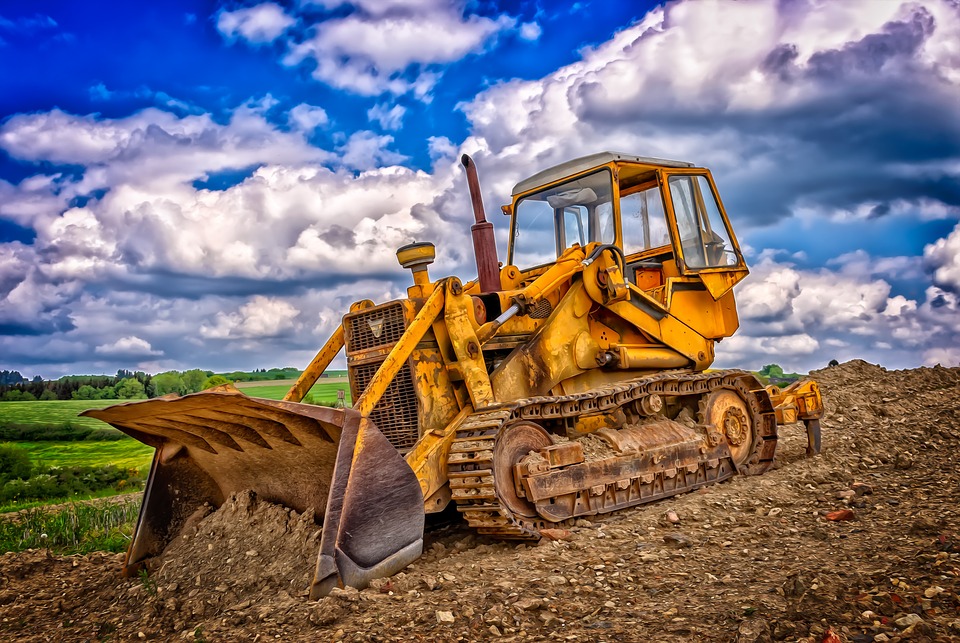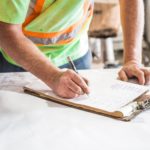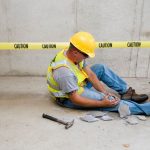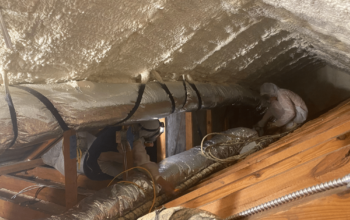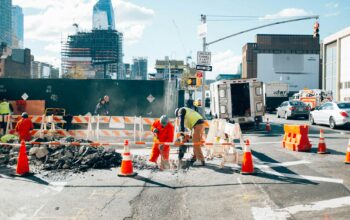Leveling a construction site is a crucial step in the construction process that ensures the safety, stability, and longevity of the structure. A level surface provides a stable foundation for the construction and ensures that the building is straight and even. To achieve an accurate and efficient leveling process, construction workers often use laser levels, which are sophisticated tools that use laser technology to determine the level of the ground accurately. Laser levels provide a high level of precision, accuracy, and speed, making them indispensable tools for construction workers. A level site also ensures that water flows away from the building and prevents water damage, which can cause costly repairs in the future. Overall, leveling a construction site is a critical step in the construction process that ensures the safety and longevity of the building, and the use of laser level makes the process efficient and precise.
In any worksite, from the smallest landscape project to a major building construction, site preparation is incredibly important in ensuring a project remains on schedule. This type of preparation is also essential so that the structural integrity of the building won’t be compromised due to sloppy preliminary work.
Part of this site preparation is the levelling of the worksite, which also encompasses land clearing, excavation, and demolition of existing structures. There are many reasons why levelling the site should be given high priority. It has a major effect on the success of a project and could potentially prevent future issues in the design, structure, and even safety aspects of the build.
Proper Drainage
Along with levelling, grading is also a vital part of the construction preparation. This process involves manipulating the slope of the soil in order to draw water away from the foundations of the structure. With levelling and grading, you need the proper equipment such as Kubota excavators and loaders to handle a large amount of soil from the site. Indeed, every worksite needs proper drainage to prevent erosion, flooding, and pests caused by the accumulation of stagnant water.
Uniform Settlement
In structural engineering, this refers to a building’s foundation support settling as planned in an even or constant rate. On the other hand, differential settlement is when there’s uneven settling in the foundation, causing stress and cracks on the foundation. There are many causes of differential settlement, one of which is poor soil compaction during the site preparation and levelling. Soil compaction is done with a variety of machines such as tamping plate compactors, wheel rollers, and crawlers. After which, the ground is tested with a soil compaction proctor test.
Efficient Utility Mapping
With a cleared and levelled construction site, engineers will have a clean slate to start with. The existing underground utilities can be clearly marked and identified to prevent interruption of services to the neighbours. Doing so will also prevent construction accidents such as bursting pipes and electrocution.
Safety and Accident Prevention
People’s safety should take priority in any worksite. Walkways and driveways need to be clear and level to prevent accidents, especially in large commercial construction sites where you have heavy machinery and equipment in the area.
Properly Laid Concrete Slabs
Before pouring concrete, you have to make sure that the ground is smooth and perfectly level or else you will get cracks as the concrete slab eventually settles. This applies to everything from a DIY backyard extension or driveway in your home to a concrete foundation on a building.
Smooth Landscaping
In landscaping a yard or a commercial site, a levelled surface is needed before turf can be installed. Aside from proper drainage, a levelled lawn makes mowing easier and creates a uniform perimeter with a nice, clean edge. On the other hand, uneven or patchy lawns can result in waterlogging, which spells disaster for your turf. Mowing can also be difficult and frustrating if you have to navigate around the lumps and bumps on the lawn.
Easy Access
Clearing and levelling the ground during a building site preparation makes it easier for the engineers and constructions workers to do their job. Without obstructions, people, vehicles, and heavy equipment can move faster through the worksite. As a result, the project can progress as scheduled and avoid any additional expenses due to delays.
Proper construction site preparation, which includes clearing, levelling, and grading, is essential in any construction project. It’s important to get the right people and the right equipment for the job. Since the foundation of your entire building or other structure is dependent on this initial prep work, it’s not a good idea to cut corners here just to keep costs down.
Related Posts

